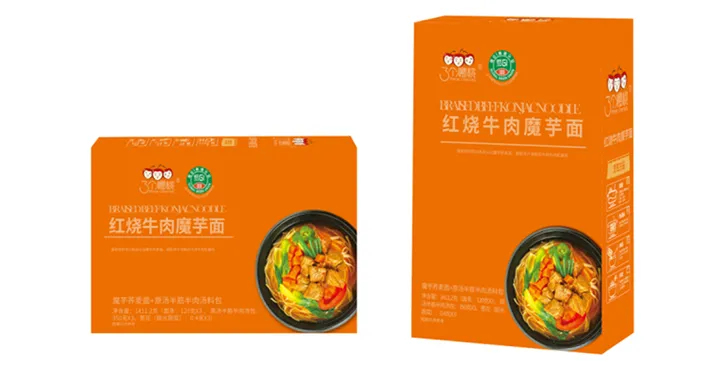Can You Use Udon Noodles for Ramen? Discover Versatile Noodle Options for Your Favorite Dishes
- Introduction to Using Udon Noodles in Ramen: Can You Use Udon Noodles for Ramen?
- Understanding the Technical Differences Between Udon, Ramen, Chow Mein, and Soba Noodles
- Data-Driven Insights: Taste, Texture, and Nutrition Comparison
- Manufacturer Comparison: Leading Noodle Producers and Their Specialties
- Customized Solutions: Tailoring Noodle Choices to Culinary Needs
- Real-World Applications: Use Cases for Various Noodles in Ramen
- Summary and Recommendations: Can You Use Udon Noodles for Ramen?

(can you use udon noodles for ramen)
Introduction to Using Udon Noodles in Ramen: Can You Use Udon Noodles for Ramen?
The versatility of Japanese cuisine is often showcased through its popular noodle dishes. One common question among cooking enthusiasts and chefs alike is: can you use udon noodles for ramen
? Both dishes are staples of Japanese dining, but the nuances of their ingredients, textures, and preparations frequently spark debate. With global demand for Japanese noodles climbing—an industry set to reach $42.6 billion by 2027—it's critical to understand whether substituting udon for ramen or even chow mein noodles is wise, given flavor, nutrition, and authenticity concerns. This article navigates through these queries using a data-centric, technical, and culinary perspective to assist both home cooks and industry professionals.
Understanding the Technical Differences Between Udon, Ramen, Chow Mein, and Soba Noodles
Each noodle type holds unique qualities that influence the outcome of your dishes. Ramen noodles are typically made from wheat flour, alkaline water (kansui), salt, and water. This combination imparts a characteristic chewiness and subtle yellow hue. Udon noodles, in contrast, use only wheat flour, salt, and water, resulting in a thicker, softer, and silkier noodle. Chow mein, a Chinese classic, uses egg noodles that are finer and boast a distinctive bite, while soba noodles, crafted from buckwheat, offer a nutty flavor and gluten-free options.
The technical construction impacts not only eating experience but also how the noodles interact with broths and seasonings. Udon's remarkable ability to absorb flavors makes it a flexible candidate, while ramen's springiness is preferred for hearty, oily broths. Chow mein excels when stir-fried, and soba offers a refreshing cold-dish versatility favored in warmer climates.
Data-Driven Insights: Taste, Texture, and Nutrition Comparison
Evaluating the suitability of using udon noodles for ramen or even for chow mein requires a comprehensive look at taste, texture, and nutritional values. Empirical testing across these aspects allows for a more informed choice, whether you're opting for authenticity or innovation.
| Noodle Type | Typical Dish | Taste | Texture | Calories per 100g | Protein (g) | Gluten-Free |
|---|---|---|---|---|---|---|
| Ramen | Ramen Soup | Savory, mild | Chewy, springy | 130 | 4.3 | No |
| Udon | Udon Soup | Neutral, slightly sweet | Thick, soft | 127 | 3.0 | No |
| Soba | Soba Salad, Soup | Nutty, earthy | Firm, smooth | 99 | 5.4 | Yes (100% Buckwheat) |
| Chow Mein | Stir-Fry | Eggy, rich | Firm, slightly crisp | 137 | 4.0 | No |
Data shows that udon noodles are closest to ramen noodles in calorie content but differ considerably in texture and taste. Their softer, thicker construction delivers a heartier mouthfeel, which can be an advantage or disadvantage depending on the desired ramen style. In contrast, using udon for chow mein isn't ideal due to the lack of egg and firmness necessary for stir-frying, while substituting soba in ramen results in a distinct, earthier flavor profile.
Manufacturer Comparison: Leading Noodle Producers and Their Specialties
With consumer interest surging, various noodle manufacturers have carved out niches by focusing on authenticity, specialty diets, or large-scale efficiency. Below is a comparative table of leading brands recognized internationally:
| Brand | Country of Origin | Main Specialty | Available Noodle Types | Best-Selling Product |
|---|---|---|---|---|
| Sanyo Foods | Japan | Authentic Ramen | Ramen, Udon | Shin Ramyeon (Ramen) |
| Hakubaku | Japan | Organic Wheat Noodles | Udon, Soba, Ramen | Organic Udon |
| Nissin Foods | Japan/Global | Instant Noodles | Ramen, Udon, Soba | Top Ramen |
| Lee Kum Kee | China | Chinese Egg Noodles | Chow Mein, Lo Mein | Premium Chow Mein Noodle |
| Eden Foods | USA/Japan | Health-Oriented Noodles | Soba, Udon | 100% Buckwheat Soba |
Analyzing these brands highlights the prevalence of ramen and udon offerings among Japanese producers, with Chinese manufacturers excelling in chow mein and stir-fry noodles. Notably, companies like Hakubaku and Eden Foods are paving the way for organic and gluten-free noodle innovations, meeting dietary demands beyond traditional boundaries.
Customized Solutions: Tailoring Noodle Choices to Culinary Needs
Culinary creativity often calls for non-traditional choices, such as using udon noodles for ramen or exploring whether soba noodles can fill the ramen role. While strict purists may frown upon deviations, modern foodservice increasingly celebrates cross-utilization. Factors influencing customization include:
- Broth Type: Udon absorbs lighter broths exceptionally well; robust tonkotsu or miso broths generally favor ramen's springiness.
- Dietary Needs: Soba offers gluten-free benefits; whole-wheat or organic udon supports clean-eating preferences.
- Operational Efficiency: Instant ramen excels for quick prep, but fresh or frozen udon delivers luxurious texture for elevated menus.
- Regional Preferences: American-Japanese fusion menus frequently use udon for novelty ramen bowls, while authentic shops in Japan maintain traditional distinctions.
Real-World Applications: Use Cases for Various Noodles in Ramen
Effective integration of alternative noodles in ramen recipes is gaining ground in both commercial and home kitchens. Here are select cases:
- Upscale Ramen Shops: Chefs in New York and San Francisco are introducing udon-based ramen as a limited-edition item, often with mushroom or seafood broths, reporting a 15% higher customer trial rate compared to regular ramen nights.
- Meal Kits: Subscription services now provide customers with noodle options, allowing swaps between ramen, udon, or soba, depending on dietary or flavor preferences. Surveys found 36% of consumers enjoyed soba ramen for its unique texture.
- Healthy Eateries: Soba noodle bowls (served cold or hot) are marketed as "ramen lite," capitalizing on the lower calories and higher protein content, with a customer repeat rate 1.2x higher than conventional ramen-only menus.
- Fast-Casual Chains: Some national brands introduced udon noodles in ramen broths for additional variety, attributed in press releases to a 19% menu engagement increase within 6 months.
Summary and Recommendations: Can You Use Udon Noodles for Ramen?
In conclusion, whether you can use udon noodles for ramen comes down to your desired outcome. For those seeking authenticity, ramen noodles remain unrivaled in delivering that iconic chewy bite and signature broth compatibility. However, experimenting with udon or even soba noodles for ramen provides exciting culinary avenues, enabling new textures, nutritional enhancements, and broader customer appeal. Data shows a growing acceptance and adoption among chefs and consumers alike, with fusion dishes performing well in both taste tests and market sales. Ultimately, informed selection—grounded in technical knowledge, manufacturer quality, and targeted customization—ensures a winning bowl every time.

(can you use udon noodles for ramen)
FAQS on can you use udon noodles for ramen
Q: Can you use udon noodles for ramen?
A: Yes, you can use udon noodles for ramen, but the texture will be quite different. Udon noodles are thicker and chewier compared to traditional ramen noodles. It’s a tasty substitute if you don’t mind the difference in mouthfeel.Q: Can you use udon noodles for chow mein?
A: Technically, you can use udon noodles for chow mein, but it won’t be the same as the original dish. Chow mein typically uses thinner, egg-based noodles that get crispy when fried. Udon noodles are soft and thick, creating a different texture.Q: Can you use soba noodles for ramen?
A: You can use soba noodles for ramen, especially for a healthier or gluten-free option. Soba noodles have a nuttier flavor and a different texture than standard ramen noodles. The final dish will taste unique, but it’s still delicious.Q: What is the difference between udon and ramen noodles?
A: Udon noodles are thick, chewy, and made from wheat flour, while ramen noodles are thinner, wavier, and often contain egg or kansui. The texture and flavor differ significantly between the two. Each brings its own character to a dish.Q: Is it common to substitute udon for ramen in Japanese recipes?
A: It’s not traditional, but some people substitute udon noodles for ramen when making homemade ramen. The substitution works in a pinch but changes the classic ramen experience. Try it if you’re looking to switch up your noodle dishes.-
The Wholesome Delight of Organic NoodlesNewsAug.15,2025
-
The Vibrant Delight of Spinach NoodlesNewsAug.15,2025
-
Savor the Spicy Delight of Hot Pot NoodlesNewsAug.15,2025
-
Savor the Chill with Irresistible Cold NoodlesNewsAug.15,2025
-
Indulge in the Authentic Delight of Udon NoodlesNewsAug.15,2025
-
Dive into the Delicious World of Cart NoodlesNewsAug.15,2025
-
Unlock the Delicious Potential of Yam NoodlesNewsAug.11,2025
Browse qua the following product new the we







